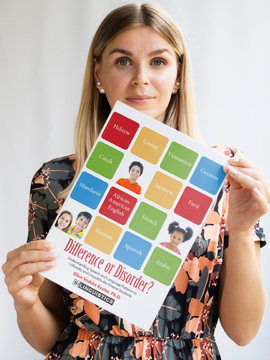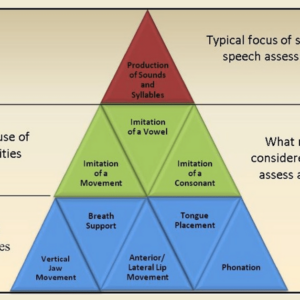Treatment Intensity in AAC: What is Normal and Should We Change?
$22.00

Course Type: Video – 1 1/2 hours
ASHA Course Code: Augmentative and Alternative Communication (AAC) – 3040
Many SLPs feel underprepared to work with individuals using AAC. This masterclass will address the use of AAC with individuals from diverse backgrounds, including cultural and linguistic differences, service delivery models, and treatment intensity.
Additional Information
| Population | Adult, Early Childhood, School Age |
|---|---|
| Duration | 1.5 hours |
| Credit | .15 Continuing Education Units |
| Topics | SLP Professional |
| Format | Video |
Financial
Dr. Kris Brock receives a salary from Idaho State University to conduct research and teach. He is also part owner of Therapy Abroad. Dr. Brock is receiving a speaking fee for this presentation.
Non-Financial
Dr. Brock has no non-financial disclosures
Over 300 school-based SLPs provided caseload demographics and the following AAC business as usual (BAU) information: (a) service delivery models, (b) treatment intensity, (c) the number of aided models provided, and (d) AAC caseload size and knowledge. Based on this data, best practices will be discussed with a focus on treatment intensity and the results from an intervention case study incorporating children from Belize.
Approximately 71% of school-based speech-language pathologists (SLPs) report an average of six children on their caseloads who utilize augmentative and alternative communication (AAC) systems (American Speech Language Hearing Association [ASHA], 2022a). The heterogeneity of disorders and physical/motoric, cognitive, and linguistic comorbidities represented within this population complicates SLP service provision. Additionally, SLPs believed pre-service graduate school training and available in-service supports left them unprepared to work with individuals who have complex communication needs (Douglas et al., 2020; Gormley & Light, 2019; Heilmann & Bertone, 2021). The client variability, combined with an underprepared and under-supported workforce, means that business as usual (BAU) practices related to AAC service-provision likely vary.
This seminar will discuss the degree of variability within BAU practices for clinicians serving individuals who use AAC systems. Specifically, four aspects of AAC service provision have received little empirical attention and will subsequently be the focus of the current survey-based study: service delivery models (e.g., group vs. individual), treatment intensity (e.g., minutes per session), caseload size, and the number of aided models per 15-min period. Via web survey, 350 school-based SLPs provided caseload demographics and the following AAC BAU information: (a) service delivery models (e.g., group pull-out), (b) treatment intensity, (c) the number of aided models provided, and (d) AAC caseload size and knowledge.
In addition to descriptive statistics, eight binomial logistic regressions were conducted to determine if caseload variables or SLP AAC knowledge predicted treatment intensity schedule, service delivery model use, or the number of aided models provided to students. Results indicated that the group pull-out model with two sessions per week for 30 minutes was used most frequently. About 62% of SLPs provided fewer than 20 aided models per 15-min period. Several logistic regressions were statistically significant. SLPs with larger AAC caseloads did not utilize the group pull-out model as frequently as SLPs with smaller AAC caseloads. As AAC caseload size increased (i.e., 31-50% and >51%), SLPs were more likely to use classroom-based services compared to SLPs with smaller AAC caseloads (i.e., 1-10%). SLPs with greater perceived AAC knowledge were more likely to have adequate treatment intensity when compared to SLPs with less AAC knowledge. Finally, only SLPs with the large AAC caseloads provided the recommended number of aided models.
AAC BAU practices in the schools are variable, with caseload/workload factors restricting the ability of SLPs to modify service delivery models and treatment intensity schedules. Overall, this survey provides clinicians a starting point to enhance clinical decisions until additional BAU quantitative research is conducted with children who use AAC systems. However, there is a single case series study that tracked treatment intensity metrics (i.e., number of sessions, number of minutes, and number of aided/unaided models) using a novel group service delivery model that incorporated three children with complex communication needs into a “summer camp” setting with naturally speaking children. All children increased their aided and unaided symbol message production within five intervention sessions lasting 180 minutes per day (15 hours total). Additionally, the average number of aided/unaided models, sampled several times over the course of 5 days, was 43.75 per 15-minute period. Although aided AAC modeling (Binger & Light, 2008) was beneficial for these children, the length of each session (3 hours) may have negatively impacted expressive outcomes on days four and five of camp.
This second part of the seminar will discuss multicultural considerations specific to Belizean children in Central America as well as the caveats and strengths of implementing novel service delivery models.
Participants will:
Identify cultural differences and how to work within different cultures while providing aided AAC intervention
Discuss how treatment intensity may impact the efficacy and efficiency of aided AAC outcomes
Identify barriers that may prevent children around the world from obtaining aided AAC intervention
Discuss how to change SLP BAU factors that impact AAC services
Time-Ordered Agenda:
10 minutes Introductions and disclosures
15 minutes Survey methods
15 minutes Results from BAU AAC Survey
20 minutes Treatment intensity intervention
15 minutes How to modify BAU and treatment intensity
15 minutes Moderated question and answer session
Need CEUs?

 Share
Share
 Tweet
Tweet
 LinkedIn
LinkedIn
 Pin
Pin
 Email
Email







